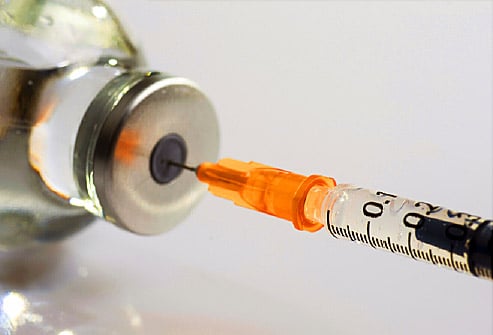What is long-acting insulin?
Long-acting insulin is a man made insulin that works by controlling blood glucose levels throughout the day. Long-acting insulin is also known as background or basal insulin. This is because long-acting insulin works in the background, over time, to lower your blood glucose levels. When you eat foods rich in carbohydrates, the pancreas will produce a natural hormone known as insulin. This naturally occurring hormone works by converting glucose into the cells for energy. People with diabetes cannot produce enough insulin, which leads to a build up of glucose in the bloodstream. Too much glucose in the blood is dangerous since it can lead to life threatening conditions. This is where basal insulin is sometimes used. People with diabetes take insulin so that they can compensate the work of the natural hormone in their body.
Background insulin works by replacing the normal functioning of insulin to stabilize blood sugar levels. That means they work slowly to lower your blood glucose levels throughout the course of the day. Basal insulin is available in analogue and animal forms. Other than Bovine PZI, which can last up to 36 hours, long-acting insulins typically last up to 24 hours. Basal insulin is preferred in the treatment of diabetes because it works consistently during the day to control blood sugar levels.
Names of long-acting insulin:
Insulin detemir (Levemir)
Levemir is the brand name of insulin detemir that is produced by Novo Nordisk. Insulin detemir is a man made insulin that is injected subcutaneously to help reduce high blood sugar levels in people with diabetes.
Insulin glargine (Lantus)
Lantus is the brand name of insulin glargine that is marketed by Sanofi-Aventis. This medication is normally injected once every day, but your doctor may advise you to take two injections.
Long-acting insulin onset, peak and duration
Peak refers to the period when the effects of the insulin are strongest. On the other hand, onset refers to how long it takes before the effects of the medication is felt in the body. Duration refers to the amount of time that the insulin can effectively lower your blood glucose levels. Basal insulin, such as insulin glargine, has an onset period of 1 to 1.5 hours; insulin detemir has an onset of 1 to 2 hours. Insulin glargine does not generally have a peak period, while insulin detemir has a peak period of 6 to 8 hours. Insulin glargine has a duration of 20 to 24 hours. On the other hand, insulin detemir has a duration of up to 24 hours.
Dosage
The dosage of long acting insulin varies depending on the brand. Tell your doctor if you change the brand of insulin. Your doctor may need to change your dose. Your doctor may add a short acting insulin to prevent the risk of blood glucose spikes after taking a meal. In case you missed a dose, you should not take a double dose to make up for the missed dose. Instead, take it as soon as you remember. If the next dose is near, skip the missed dose and continue with your normal dosage. If you are not sure how or when to take your medication, call your doctor.
How to take it
Long-acting insulin is usually injected under the skin, once, every day to keep your blood glucose levels stable. You can use a pen or a needle to give yourself an insulin injection. Make sure you inject your insulin at the same time every day to reduce the chance of gaps in insulin coverage.
Side effects
Just like taking other medication, background can lead to side effects. One possible side effect of long-acting insulin is hypoglycemia.
Symptoms of hypoglycemia include the following:
- Dizziness
- Headache
- Fainting
- Weakness
- Anxiety
- Blurred vision
- Chills
- Increased heartbeat
- Irritability
You may also experience other side effects of insulin injections like allergic reactions, with symptoms such as pain, redness or swelling at the injection site. Inform your doctor when you notice any of these side effects.
Disclaimer: Please note that the contents of this community article are strictly for informational purposes and should not be considered as medical advice. This article, and other community articles, are not written or reviewed for medical validity by Canadian Insulin or its staff. All views and opinions expressed by the contributing authors are not endorsed by Canadian Insulin. Always consult a medical professional for medical advice, diagnosis, and treatment.


